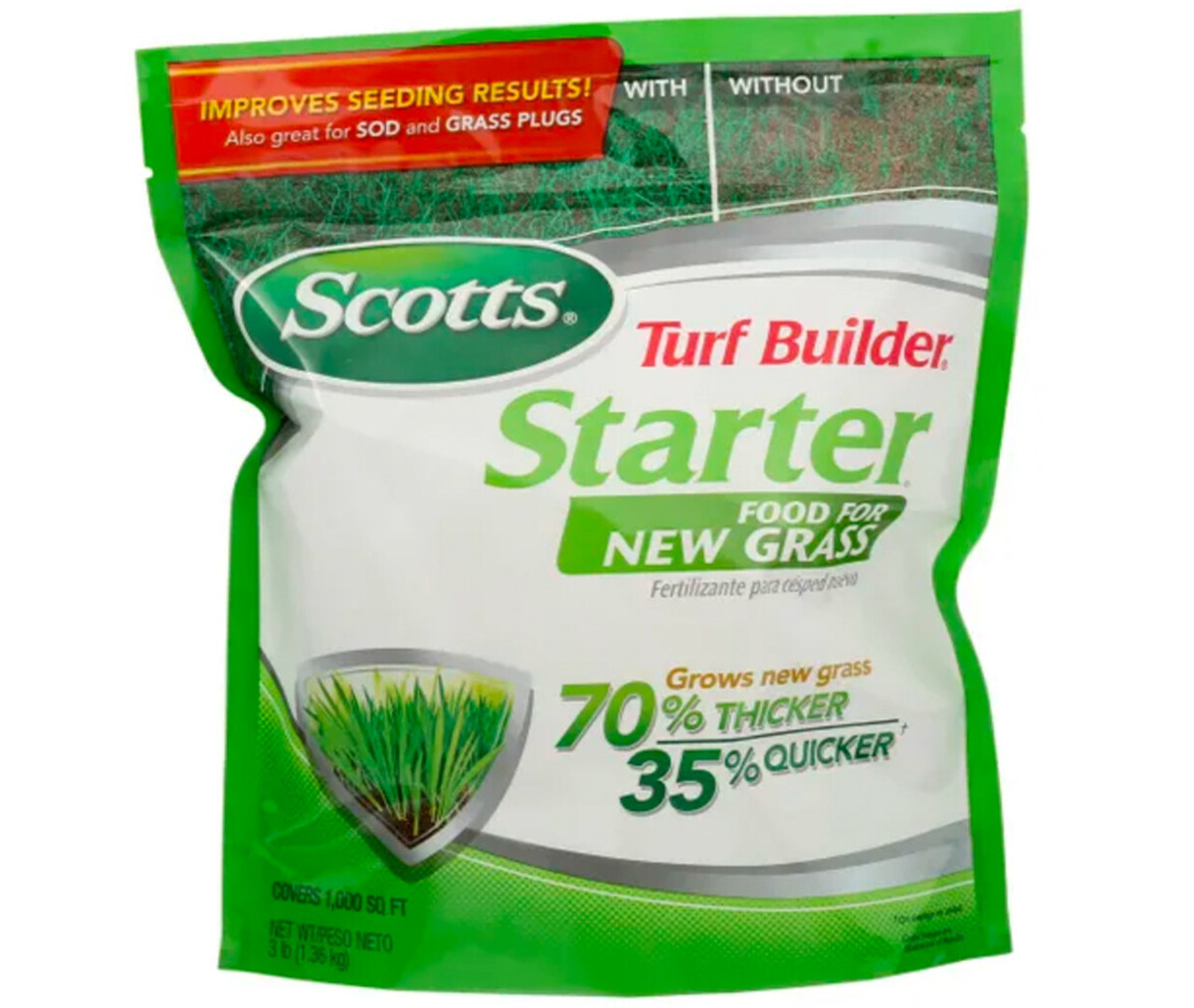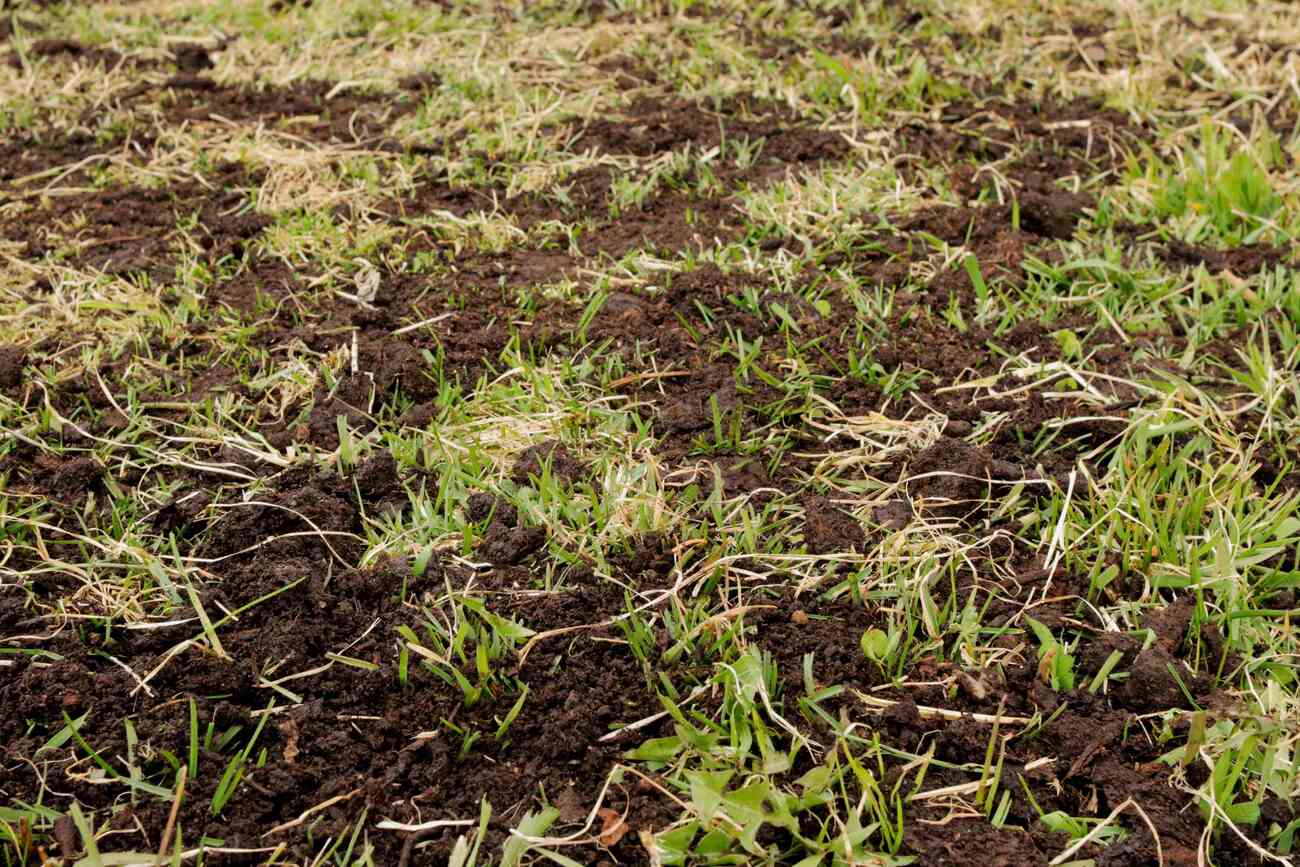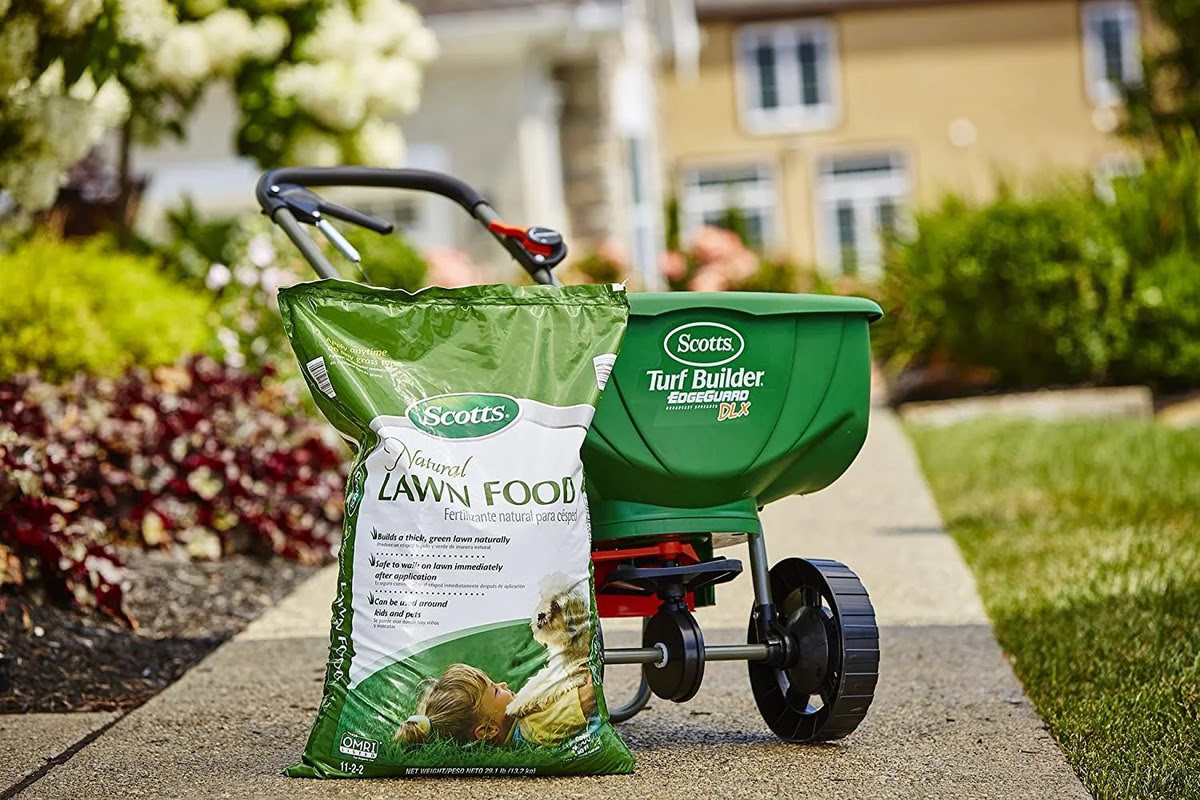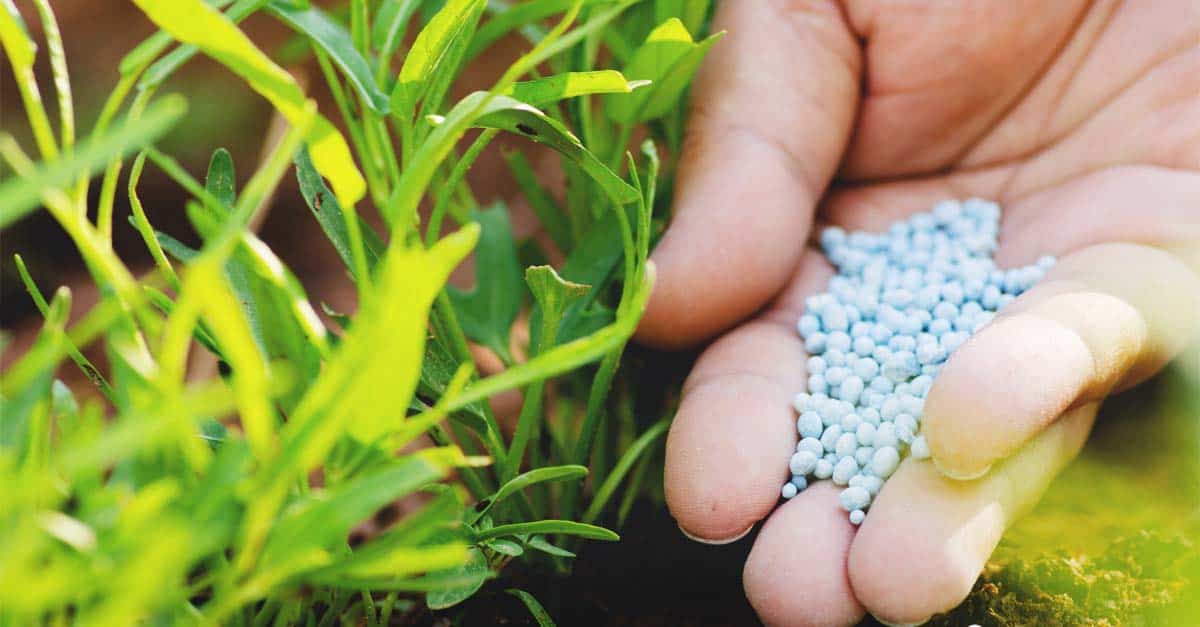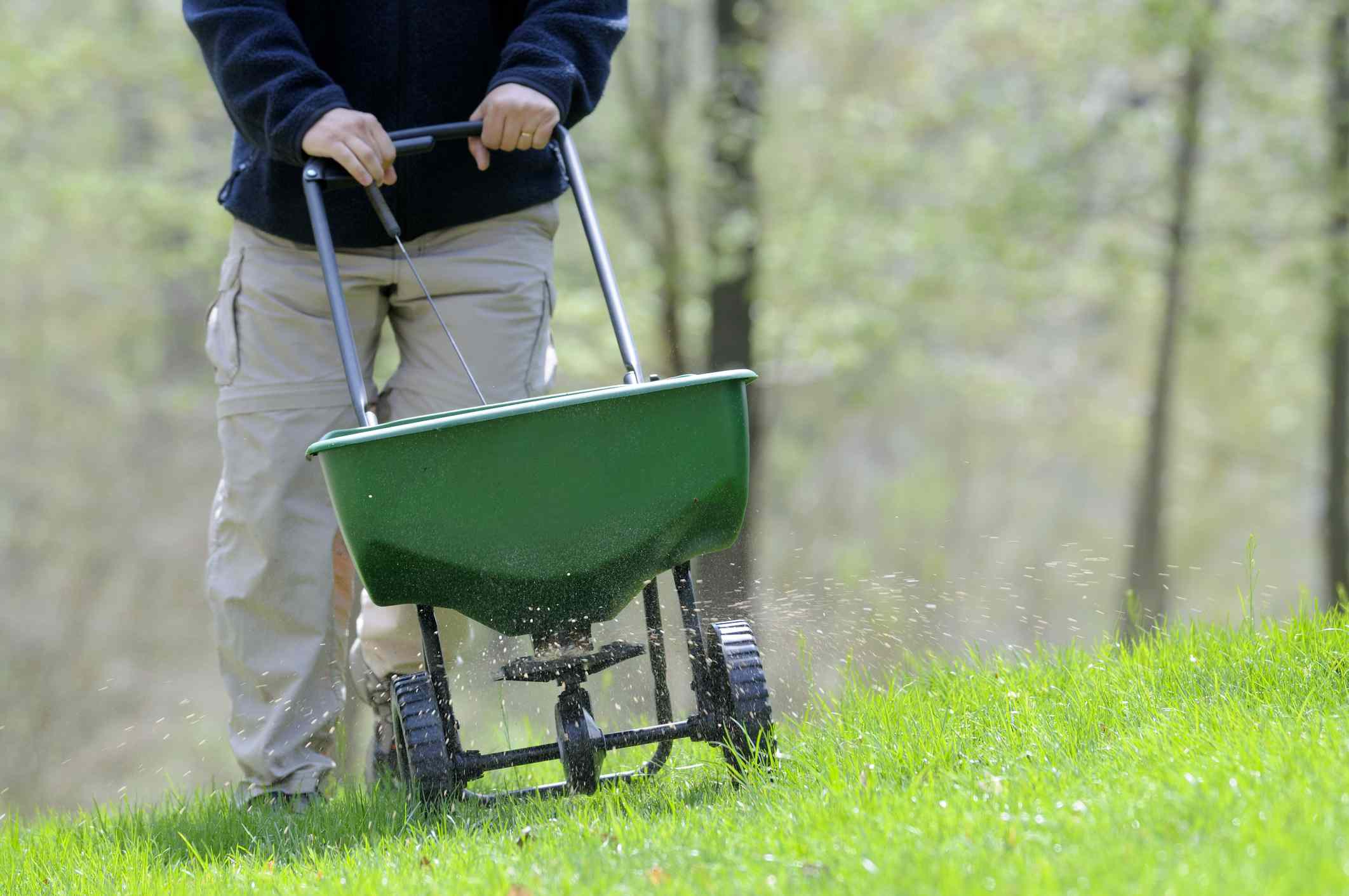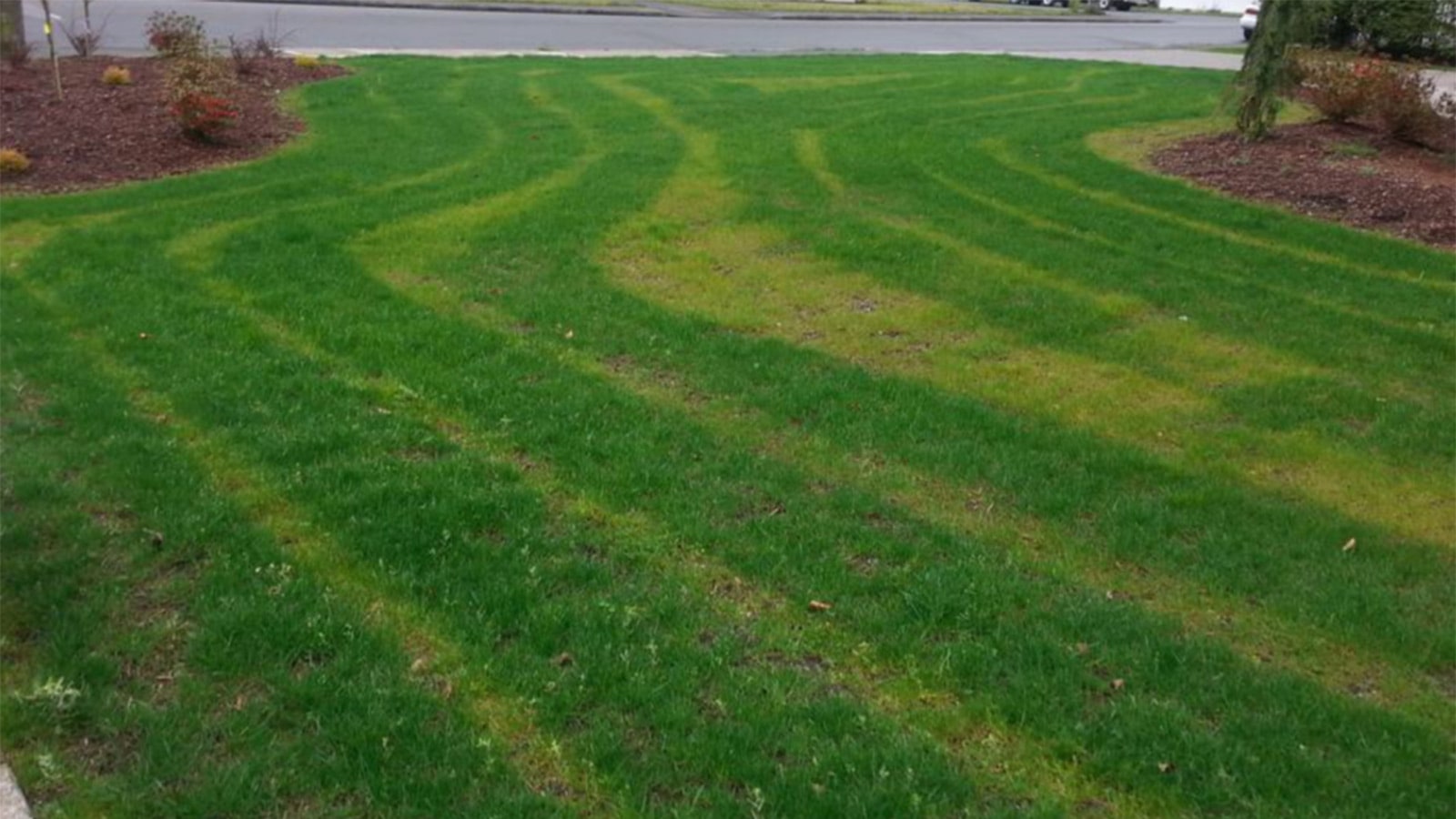Home>Gardening Techniques>DIY Projects>When To Apply Scotts Fertilizer
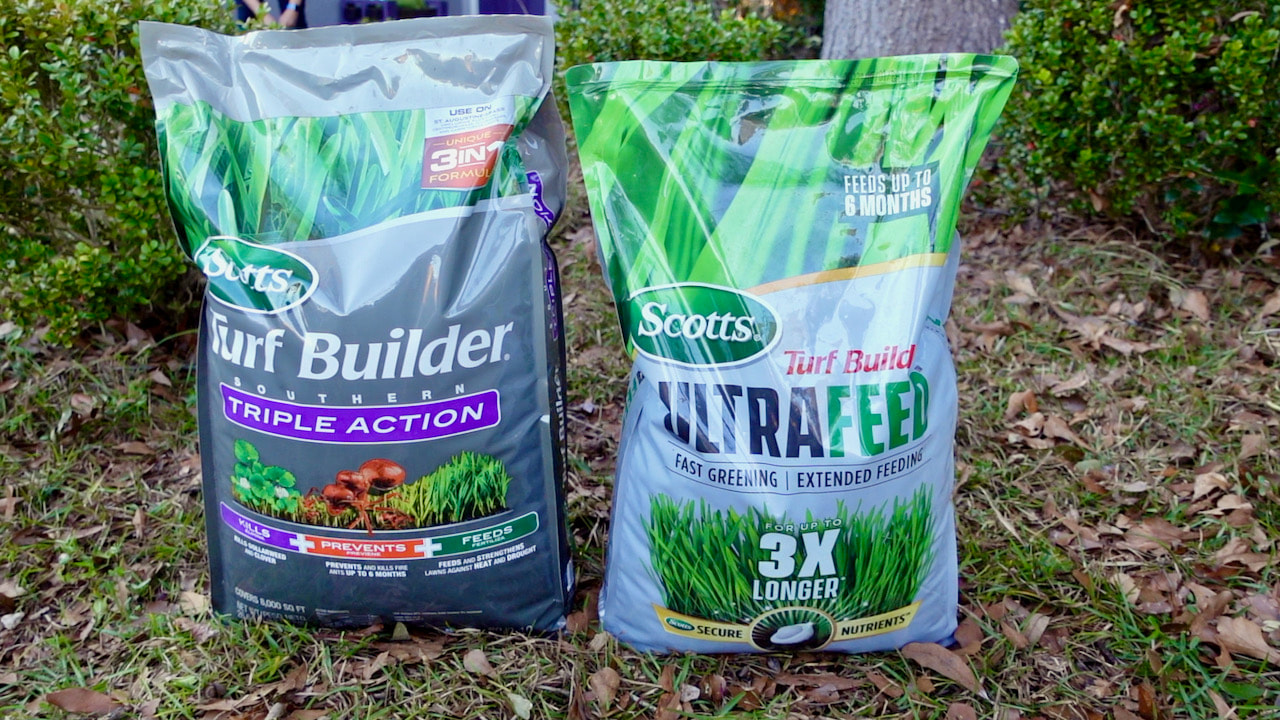

DIY Projects
When To Apply Scotts Fertilizer
Modified: January 22, 2024
Learn when and how to apply Scotts fertilizer to your lawn with these helpful DIY project tips.
(Many of the links in this article redirect to a specific reviewed product. Your purchase of these products through affiliate links helps to generate commission for Chicagolandgardening.com, at no extra cost. Learn more)
Table of Contents
Introduction
Welcome to the world of DIY projects! Whether you’re a seasoned DIY enthusiast or just getting started, there’s something incredibly rewarding about taking matters into your own hands and completing a project on your own. From building furniture to renovating your home, the possibilities are endless when it comes to DIY.
One key aspect of many DIY projects is using the right tools and materials to achieve the desired results. In the realm of gardening and landscaping, using fertilizer is a common practice to promote healthy plant growth and enhance the overall appearance of your outdoor space. And when it comes to fertilizers, Scotts is a well-known brand that is trusted by homeowners and professionals alike.
Scotts fertilizer is a versatile product that can be used to nourish your lawn, garden, or even potted plants. It contains a balanced blend of essential nutrients, such as nitrogen, phosphorus, and potassium, that are necessary for healthy plant growth. By providing these nutrients in the right proportions, Scotts fertilizer can help your plants develop strong roots, vibrant foliage, and abundant flowers or fruits.
However, knowing when to apply Scotts fertilizer is crucial to ensure maximum effectiveness. Applying it at the wrong time may not yield the desired results and could even harm your plants. In this article, we will explore the factors to consider before applying Scotts fertilizer and the best times to use it. Additionally, we will provide step-by-step instructions on how to apply it and some precautions you should take to ensure safety.
So, if you’re ready to take your DIY gardening and landscaping projects to the next level, let’s dive in and discover the optimal ways to utilize Scotts fertilizer for a lush and thriving outdoor space!
Understanding Scotts Fertilizer
Before we delve into the best times to apply Scotts fertilizer, it’s important to understand the product itself. Scotts fertilizer is formulated to provide the essential nutrients that plants need to thrive. These nutrients include nitrogen (N), phosphorus (P), and potassium (K), also known as NPK. Each nutrient serves a specific purpose in promoting plant growth and development.
Nitrogen (N) is responsible for leaf and stem growth. It plays a crucial role in the production of chlorophyll, the pigment that gives plants their green color and enables them to perform photosynthesis. A sufficient supply of nitrogen promotes lush foliage and enhances the overall health of the plant.
Phosphorus (P) is essential for root development and promoting strong, vigorous plants. It plays a vital role in energy transfer and helps plants utilize other nutrients effectively. Adequate phosphorus levels are especially important during the early stages of plant growth, as they contribute to the establishment of a healthy root system.
Potassium (K) is vital for overall plant health and resilience. It helps regulate water movement within plant cells, aids in disease resistance, and promotes flowering and fruiting. Potassium also plays a role in strengthening plant tissues, making them more capable of withstanding stressors such as extreme temperatures, drought, and pests.
Understanding these nutrients allows you to choose the appropriate Scotts fertilizer formulation for your specific needs. For example, if your lawn is lacking in greenness and vigor, a fertilizer with a higher nitrogen content would be beneficial. On the other hand, if you want to encourage flower or fruit production, a fertilizer with a higher phosphorus or potassium content would be more suitable.
Scotts offers a range of fertilizer products to cater to different plant types and requirements. These products may vary in their NPK ratios and additional components, such as micronutrients or organic matter. It’s important to carefully read the product labels and choose the fertilizer that best matches your specific gardening goals.
Now that we have a basic understanding of Scotts fertilizer and its components, let’s move on to discussing the factors you need to consider before applying it to your plants.
Factors to Consider Before Applying Scotts Fertilizer
Applying Scotts fertilizer at the right time and under the right conditions is crucial to ensure its effectiveness and prevent any potential harm to your plants. Here are some important factors to consider before applying Scotts fertilizer:
- Soil Testing: Before applying any fertilizer, it’s recommended to conduct a soil test. A soil test will provide valuable information about the pH level, nutrient deficiencies, and organic matter content of your soil. This information will help you determine the appropriate type and amount of Scotts fertilizer to use.
- Plant Type: Different plants have different nutrient requirements. Understanding the specific needs of your plants will enable you to choose the right fertilizer formulation. For example, flowering plants may require a higher phosphorus content to promote blooming, while leafy vegetables may benefit from a higher nitrogen content for lush foliage growth.
- Season: The time of year plays a significant role in determining when to apply Scotts fertilizer. Generally, it’s best to fertilize in early spring and fall when plants are actively growing. Avoid fertilizing during extreme temperatures, such as the hot summer months or frosty winter periods, as plants may be less responsive to nutrients during these times.
- Weather: It’s important to consider the weather conditions when applying Scotts fertilizer. Ideally, apply the fertilizer when the soil is moist but not saturated. Heavy rain immediately after application can wash away the fertilizer, while dry conditions may hinder nutrient absorption. Check the weather forecast and plan your application accordingly.
- Application Rate: Follow the instructions provided on the Scotts fertilizer packaging regarding the recommended application rate. Applying too much fertilizer can lead to nutrient imbalances and potential damage to plants, while under-application may not provide the desired results. Use the appropriate measuring tools to ensure accurate and even distribution.
- Environmental Factors: Consider the environmental impact of using fertilizer. Avoid applying near bodies of water to prevent nutrient runoff, which can lead to water pollution. Take extra care when fertilizing near sensitive plants or areas where pets and children frequent. Always follow safety guidelines and dispose of any unused fertilizer properly.
By taking these factors into account, you can make informed decisions about when and how to apply Scotts fertilizer, maximizing its benefits while minimizing any potential negative impacts. Now that we have discussed the factors to consider, let’s move on to exploring the best times to apply Scotts fertilizer.
Best Times to Apply Scotts Fertilizer
The timing of fertilizer application is vital to ensure optimal results. Applying Scotts fertilizer at the right time ensures that your plants receive the necessary nutrients when they need them the most. Here are the best times to apply Scotts fertilizer:
- Early Spring: As the weather warms up and plants start to emerge from their dormant state, early spring is an ideal time to apply Scotts fertilizer. This is when plants need a boost of nutrients to support their initial growth spurt. Fertilizing at this time promotes healthy root development and prepares the plants for the growing season ahead.
- Late Spring: In late spring, once the risk of frost has passed, it is another opportune time to apply Scotts fertilizer. This application helps to sustain the plants’ nutritional needs as they continue to grow and develop. It contributes to the overall vigor and blooming potential of flowering plants.
- Fall: Applying Scotts fertilizer in the fall is crucial for the long-term health of your plants. As they transition into dormancy, it’s important to provide them with essential nutrients to support root growth and strengthen their defenses against winter stress. Fall fertilization promotes strong root development and enhances the plants’ ability to survive and thrive during the following growing season.
- Before Rain: Taking advantage of forecasted rain is a smart approach when applying Scotts fertilizer. Rain helps to evenly distribute the nutrients in the soil and facilitates their absorption by the plants. Applying fertilizer a day or two before anticipated rain is an effective strategy to ensure the nutrients are readily available to the plants.
- Before Mowing: Timing is key when it comes to mowing and fertilizing your lawn. It’s best to apply Scotts fertilizer a few days before you plan to mow. This allows the fertilizer to be absorbed by the grass and provides the necessary nutrients for healthy growth and recovery after mowing.
- As Needed: Apart from the specific recommended times mentioned above, you can also apply Scotts fertilizer as needed for particular plants in your garden. Some plants may require additional fertilization during their growing season, especially if signs of nutrient deficiencies or poor growth are observed.
Remember to always follow the instructions provided on the Scotts fertilizer packaging regarding the specific timing recommendations for the product you are using. By applying Scotts fertilizer at the best times, you can ensure that your plants receive the right nutrients at the right time, leading to healthier and more vibrant plants.
Now that we have explored the best times to apply Scotts fertilizer, let’s move on to learn how to properly apply it to your garden or lawn.
How to Apply Scotts Fertilizer
Proper application of Scotts fertilizer is essential to ensure that the nutrients are evenly distributed and effectively absorbed by your plants. Follow these steps to apply Scotts fertilizer correctly:
- Read the Instructions: Start by carefully reading and understanding the instructions provided on the Scotts fertilizer packaging. Each product may have specific guidelines and application rates that need to be followed.
- Prepare the Area: Before applying the fertilizer, remove any debris, weeds, or dead plant material from the area. This ensures that the fertilizer comes into direct contact with the soil and roots of your plants.
- Select the Appropriate Spreader: Depending on the size of your lawn or garden, choose the appropriate spreader for even distribution of the fertilizer. Broadcast spreaders are ideal for larger areas, while handheld spreaders work well for smaller spaces or precise application around specific plants.
- Calibrate the Spreader: Calibrate your spreader according to the instructions provided on the packaging. This ensures that you apply the fertilizer at the recommended rate and avoid both under-application and over-application.
- Apply in a Uniform Pattern: Begin by walking in a straight line, evenly spreading the fertilizer as you go. Overlap each pass slightly to ensure complete coverage. This helps to avoid fertilizing some areas more than others.
- Water the Area: After applying the Scotts fertilizer, water the area thoroughly. This helps to activate the fertilizer and allows it to penetrate into the soil and reach the plant’s roots. Follow the watering recommendations for the specific product you are using.
- Clean Up: Once you have finished applying the fertilizer, be sure to clean your spreader to prevent any residue from clogging the equipment. Store the remaining fertilizer in a cool, dry place, following any storage instructions provided.
Remember, proper fertilization is a balance. Applying more fertilizer than recommended can lead to nutrient imbalances and can potentially harm your plants, while under-application may result in insufficient nutrient uptake. By following these steps and the instructions provided by Scotts, you can ensure proper application and avoid any potential issues.
Now that you know how to apply Scotts fertilizer correctly, let’s move on to discussing some precautions and safety measures you should keep in mind.
Precautions and Safety Measures
When using any fertilizer, including Scotts fertilizer, it is important to prioritize safety and take necessary precautions to protect yourself, your family, and the environment. Here are some key precautions and safety measures to keep in mind:
- Wear Protective Gear: When handling and applying Scotts fertilizer, it is advisable to wear gloves, long-sleeved clothing, and closed-toe shoes to protect your skin from potential irritation.
- Keep Children and Pets Away: Ensure that children and pets are kept away from the area where the fertilizer is being applied. This is particularly important during application and until the area has been thoroughly watered.
- Follow Application Instructions: Always follow the specific application instructions provided by Scotts for the fertilizer product you are using. Use the recommended amount and apply according to the specified timing and frequency.
- Avoid Overapplication: Applying excessive amounts of fertilizer can result in nutrient imbalances, leaching of nutrients into groundwater, and potential harm to plants. Be mindful of the recommended application rates and avoid overapplication.
- Store Properly: After use, store any remaining fertilizer in its original packaging in a cool, dry place. Ensure that it is out of reach of children and pets to prevent accidental ingestion or misuse.
- Proper Disposal: Dispose of any unused or expired fertilizer properly. Do not dump it down the drain or into bodies of water, as it can contribute to water pollution. Contact your local waste management facility for guidance on proper disposal methods.
- Avoid Storm Drains: When applying Scotts fertilizer, ensure that it does not come into contact with storm drains or areas that drain directly into bodies of water. This prevents the fertilizer from reaching local waterways and causing pollution.
- Use in accordance with Local Regulations: Be aware of any local regulations or restrictions on fertilizer use in your area. Some regions have specific guidelines or limitations to protect water quality and the environment.
By following these precautions and safety measures, you can ensure a safe and responsible application of Scotts fertilizer. Remember, safety should always be a priority when working with any gardening products.
Now that we have discussed the precautions and safety measures, let’s reflect on the importance of responsible fertilizer use and how it contributes to a thriving and sustainable garden or lawn.
Conclusion
Using Scotts fertilizer in your DIY projects can greatly enhance the health and beauty of your plants, whether it’s a lush lawn or a bountiful garden. Understanding the product, considering the right factors, and applying it at the best times are all crucial for achieving optimal results.
By understanding the composition of Scotts fertilizer, including the essential nutrients of nitrogen, phosphorus, and potassium, you can select the appropriate formulation for your specific needs. Additionally, considering factors such as soil testing, plant type, season, weather, and application rate ensures that you apply the fertilizer effectively and avoid any potential harm to your plants or the environment.
Applying Scotts fertilizer at the best times, such as early spring, late spring, and fall, supports the growth, development, and resilience of your plants. Timing it before rain or before mowing can also yield better results. By following the recommended application techniques, including proper area preparation, correct spreader selection, and uniform distribution, you can ensure that the nutrients are evenly absorbed by your plants.
Throughout the entire process, it is crucial to prioritize safety and take necessary precautions. Wearing protective gear, keeping children and pets away during application, following instructions, and proper storage and disposal are all important measures for responsible fertilizer use.
By incorporating these practices into your DIY gardening and landscaping projects, you can create a sustainable and thriving outdoor space. Remember, each plant and situation may have unique requirements, so always tailor the use of Scotts fertilizer to specific needs and follow the instructions provided on the product packaging.
Enjoy the journey of nurturing your plants, and may your DIY projects be filled with the joy and satisfaction of watching them flourish and thrive!


